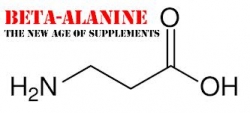We all know that hitting “the wall” is the second most helpless feeling in this great sport behind getting arm pump. It can be literally be the deciding factor in your quest to get on the box each weekend. And let’s face it, we all know the signs of when the wall is staring us right in the face. You can sense that numbing fatigue that first grabs a hold of your mind, then quickly overcomes the rest of your body. Your heart rate rises, as your muscles seemingly become weak and unresponsive; your breathing becomes labored as you try to inhale more oxygen and expel carbon dioxide, but as much as you try, recovery seems to be hopeless.
In the world of exercise physiology, lactic acid is the culprit that affects your body and shuts you down. When acid levels rise too high in your muscles, it inhibits your body’s ability to produce more energy, and your muscles essentially protect themselves and shut down until the acid levels start returning to normal. Your body is always producing lactic acid to varying levels – the more high intensity work you are do (i.e. Sprints, weights, aggressive riding), the more lactic acid you produce. If you produce too much lactic acid and cross what we call the “lactic acid threshold” you will start to hit the wall very quickly.
I’ve been involved with numerous studies on athletes where we measured lactic acid during exercise to try to understand how we can elevate performance and raise an athlete’s ability to train harder and longer, which will of course translate into better performance on the track. We drew blood samples during various levels of exercise intensity before and after customized training and diet programs to see how they affect lactic acid and performance levels. Below are our observations and recommendations from years of study and observation:
- Be aerobically fit – When you are aerobically fit, your body and in particular your slow-twitch muscle fiber uses lactic acid as a fuel and consequently clears it from during and after exercise. Before and during the season make sure to do longer, lower intensity cardio sessions on the bike or treadmill to strengthen your ability to clear lactic acid. Getting to your max heart rate as your goal of each training session will not condition your musclefibers to clear lactic acid efficiently.
- Buffer lactic acid with a carbonate before you train or race. What’s a carbonate you ask? Well, carbonates can be found in things like baking powder, or other commercial products like TUMS®, and they have been used for decades to help relieve the discomfort of stomach acid. Subsequently, bicarbonate (baking soda) has also been used to affect lactic acid levels, which can result in improved performance. In one study athletes received 200mg/kg bodyweight, about 18 grams of bicarbonate for a 200 lb. athlete. The subjects then performed five successive 60-second sprints on a stationary bike, with the last sprint lasting until the subjects reached exhaustion. The bicarbonate supplementation improved time until exhaustion by 42%1. This is a significant improvement that can be directly translated to performance on the track.
- Consider using Beta-alanine – although there are many studies done on Beta alanine, one stands out in particular. In this study, the researchers wanted to investigate whether Beat-alanine could improve performance in the later stages of exercise2. Cyclist performed a 10-minute time trial, followed by a 30-second all out sprint. Half of the study participants supplemented 2-4 g of Beta-alanine/day for 8 weeks prior to the test, while the remaining participants received a placebo (fake supplement). The end result was that the participants that used Beta-alanine group had 11.4% greater peak power during the sprint, and 5% greater average power than the group the received the placebo. This is significant when you correlate the results to motocross. Riding at a higher intensity, with increased power later in the moto can mean a significant difference in how you place in the race.
So in conclusion, there are calculated things you can do to fight of the fatigue that is caused by lactic acid. Being aerobically fit, so your body can clear lactic acid efficiently can be teamed up with supplementing Beta-alanine (2-4 grams/day) with or without baking soda. Thanks for tuning in, and as always don’t hesitate to drop me a line at info@action-brands.com, and drop by ACTIONETIX.com to review all the articles that will help improve your performance on the track.
1. Costill, D.L., et al. (1984). Acid base balance during repeated bouts of exercise. Influence of HC03. International Journal of Sports Medicine 5, pp. 225-231.
2. Beta-alanine improves sprint performance in endurance cycling. Med Sci Sports Exerc. 2009 Apr;41(4):898-903.
